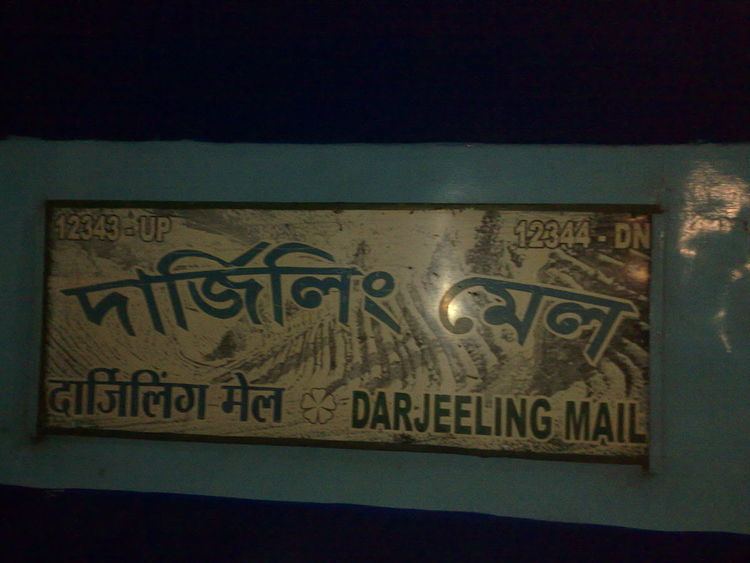Service type Superfast Mail | Start Sealdah | |
 | ||
Current operator(s) Eastern Railway of Indian Railways Ridership Popular train between Kolkata-Siliguri with slip route to- Haldibari via Jalpaiguri Stops Bardhaman, Bolpur, Malda Town, Kishanganj End New Jalpaiguri/Siliguri - Slip route to- Haldibari via Jalpaiguri | ||
The Darjeeling Mail is one of the legendary trains in the eastern region of India that has been running from pre-independence days and is still in operation. It connects to the Darjeeling Himalayan Railway at New Jalpaiguri in Siliguri. This is a major train for Kolkata-Siliguri route and Haldibari slip route.
Contents
Run via East Bengal
During the British period all connections to North Bengal were through East Bengal.
From 1878, the railway route from Kolkata, then called Calcutta, to Siliguri was in two laps. The first lap was a 185 km journey along the Eastern Bengal State Railway from Calcutta Station (later renamed Sealdah) to Damookdeah Ghat on the southern bank of the Padma River. The passengers would then avail a ferry across the river. The second lap of the journey was a 336 km metre gauge line of the North Bengal Railway that linked Saraghat on the northern bank of the Padma to Siliguri.
Later the 1.8 km long Hardinge Bridge across the Padma came up in 1912. In 1926 the metre-gauge section north of the bridge was converted to broad gauge, and so the entire Calcutta - Siliguri route became broad-gauge. The route thus roughly ran: Sealdah-Ranaghat-Bheramara-Hardinge Bridge-Iswardi-Santahar-Hili-Parabtipur-Nilphamari-Haldibari-Jalpaiguri-Siliguri.
The Darjeeling Mail ran on this route in pre-partition days. Even after the partition of India it ran on this route for some years.
Ferry across Ganges(Post-partition)
With the partition of India in 1947, the major hurdle in connecting Kolkata and Siliguri was that there was no bridge across the Ganges in West Bengal or Bihar. A generally acceptable route to Siliguri was via Sahibganj Loop to Sakrigali ghat, then across the Ganges by ferry to Manihari Ghat on the other side,then to Kishanganj via Katihar and Barsoi and finally through narrow gauge to Siliguri. In 1949 Kishanganj-Siliguri section was too converted to metre gauge,thus making the entire route an uni-gauge one.
Run via Farakka Barrage
In the early 1960s, when Farakka Barrage was being constructed, a more radical change was made. Indian Railways created a new broad-gauge rail link from Kolkata, and on a greenfield site south of Siliguri Town built an entirely new broad-gauge junction, New Jalpaiguri.
The 2,240 metres (7,350 ft) long Farakka Barrage carries a rail-cum-road bridge across the Ganges. The rail bridge was thrown open to the public in 1971, thereby linking the Barharwa-Azimganj-Katwa Loop Line to Malda Town, New Jalpaiguri and other railway stations in North Bengal. Since then Darjeeling Mail has been using the Howrah-New Jalpaiguri line.
